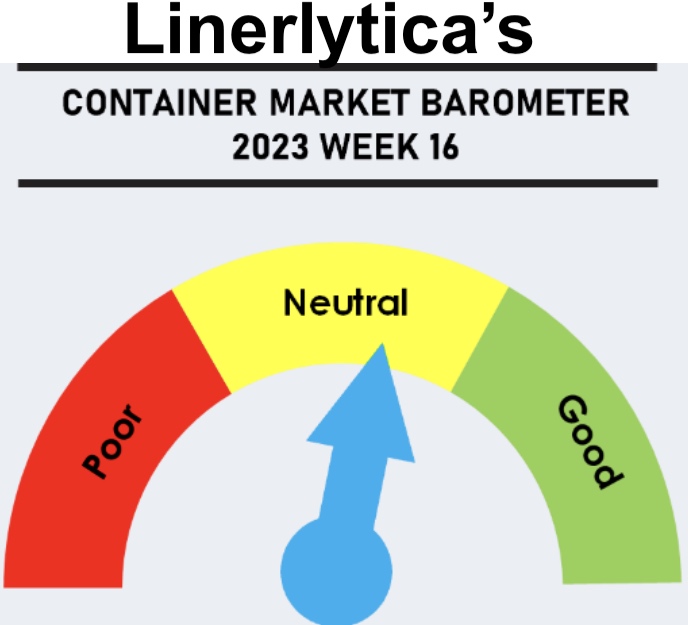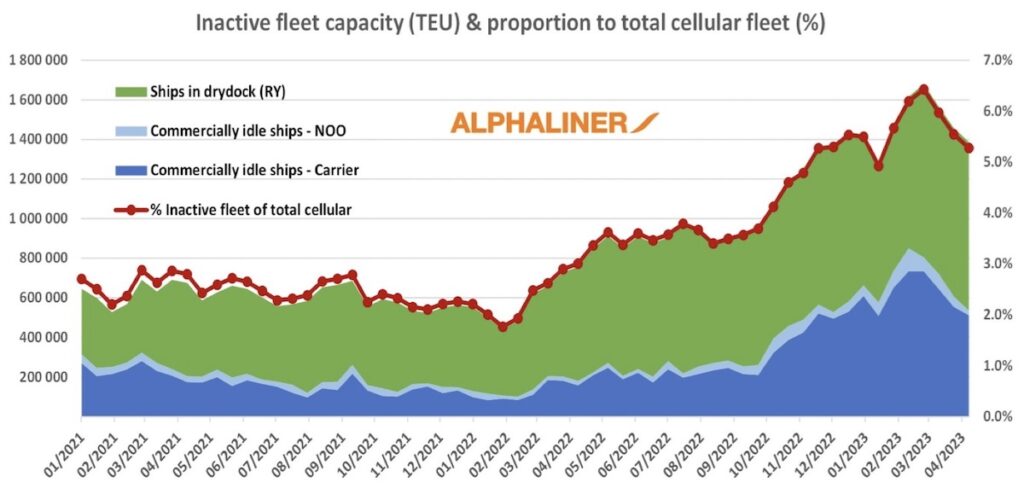
There is a growing consensus that container shipping has bottomed out with many indicators on the way back up after nine months of decline.
Splash reported eight days ago on how multiple analysts including from banks HSBC and Jefferies had called the bottom of the market. In the intervening days, charter rates have firmed further, enquiries for secondhand tonnage remain strong, while Drewry’s composite World Container Index (WCI) increased yesterday by 4% to $1,773.58 per feu – the first increase in 15 weeks.
“The weekly Drewry WCI index is now showing signs that the market has possibly reached a bottom and is slowly beginning to rebound on the major head-haul trades,” commented Lars Jensen, the founder of consultancy Vespucci Maritime, via LinkedIn.

The trades from China to North Europe, US west coast and US east coast all show signs of rebounding, Jensen noted.
Soaking up capacity, Jefferies pointed out this week that containership speeds have reduced to new lows, surpassing the lows seen during the early stages of the covid pandemic. Containerships sailed at an average of 13.5 knots during Q1, down from the 2022 average of 14.3 knots and the 2021 average of 14.5 knots. Current sailing speeds are lower than the 14.1 knots seen during the early stages of the covid pandemic in 2020. The 0.8 knots reduction this year is the equivalent of removing 4.5% of existing vessel capacity, according to analysis by Jefferies.
HSBC discussed this week its “optimism” that spot rates are not just stabilising but are likely on a recovery path.
“We expect shipping lines to look to firm up the spot market to sustain higher contract rates in the summer,” HSBC stated in its latest freight monitor report.
Keen to drive business, liners are getting their ships back into action. In the first half of April, the inactive container ship fleet shrank for the third consecutive fortnightly review period, according to Alphaliner.
Charter rates have been rising steadily for most sizes of ships, while period employments are also getting increasingly long, especially for the best and most energy-efficient vessels, according to Alphaliner.

Did you subscribe to our daily Newsletter?
It’s Free! Click here to Subscribe
Source: Splash 247















